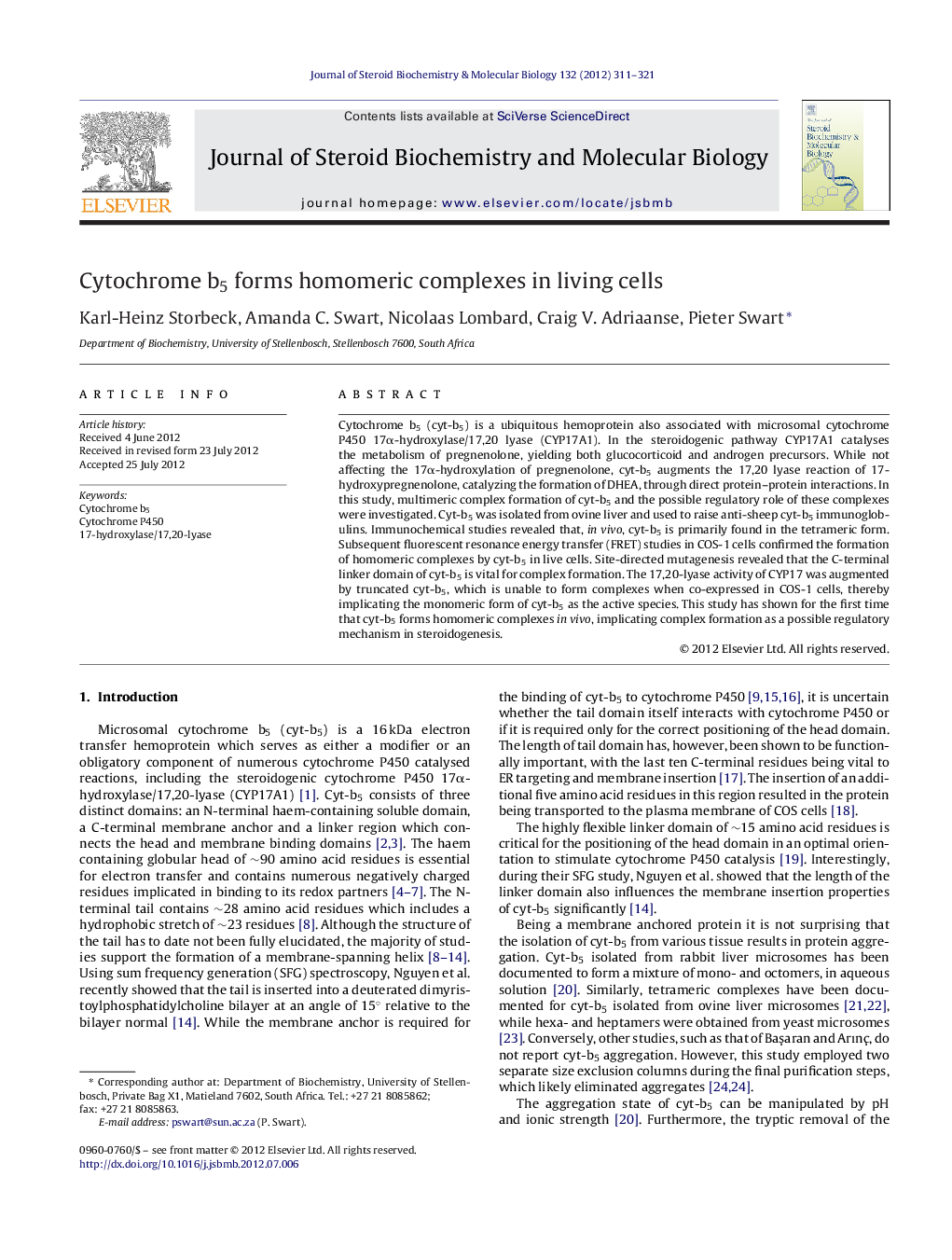| Article ID | Journal | Published Year | Pages | File Type |
|---|---|---|---|---|
| 1991615 | The Journal of Steroid Biochemistry and Molecular Biology | 2012 | 11 Pages |
Cytochrome b5 (cyt-b5) is a ubiquitous hemoprotein also associated with microsomal cytochrome P450 17α-hydroxylase/17,20 lyase (CYP17A1). In the steroidogenic pathway CYP17A1 catalyses the metabolism of pregnenolone, yielding both glucocorticoid and androgen precursors. While not affecting the 17α-hydroxylation of pregnenolone, cyt-b5 augments the 17,20 lyase reaction of 17-hydroxypregnenolone, catalyzing the formation of DHEA, through direct protein–protein interactions. In this study, multimeric complex formation of cyt-b5 and the possible regulatory role of these complexes were investigated. Cyt-b5 was isolated from ovine liver and used to raise anti-sheep cyt-b5 immunoglobulins. Immunochemical studies revealed that, in vivo, cyt-b5 is primarily found in the tetrameric form. Subsequent fluorescent resonance energy transfer (FRET) studies in COS-1 cells confirmed the formation of homomeric complexes by cyt-b5 in live cells. Site-directed mutagenesis revealed that the C-terminal linker domain of cyt-b5 is vital for complex formation. The 17,20-lyase activity of CYP17 was augmented by truncated cyt-b5, which is unable to form complexes when co-expressed in COS-1 cells, thereby implicating the monomeric form of cyt-b5 as the active species. This study has shown for the first time that cyt-b5 forms homomeric complexes in vivo, implicating complex formation as a possible regulatory mechanism in steroidogenesis.
► Purified cytochrome b5 forms tetrameric complexes. ► Immunochemical studies show that cytochrome b5 is present in the tetrameric form in vivo. ► FRET studies confirmed that cytochrome b5 forms homomeric complexes in live cells. ► The C-terminal linker domain of cytochrome b5 is vital for homomeric complex formation.
